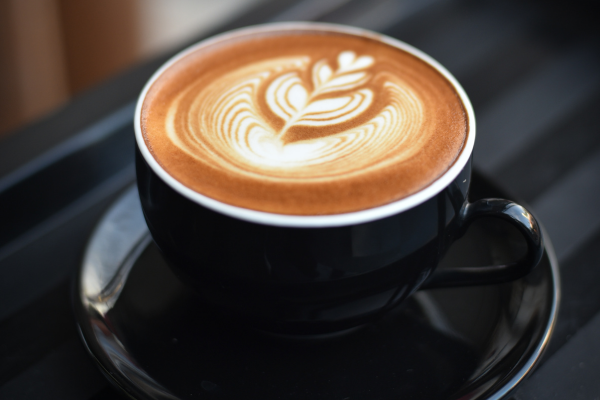If you want to take your home coffee brewing to the next level, the most important investment you can make isn’t a fancy machine—it’s a good coffee grinder. Grinding your beans right before brewing guarantees fresher, more flavorful coffee. But with so many options available, choosing the right grinder can feel overwhelming.
In this guide, you’ll learn the different types of coffee grinders, how they affect your coffee, and how to choose the best one for your brewing style and budget.
Why Fresh Grinding Matters
Pre-ground coffee loses its aroma and flavor within minutes due to exposure to air, moisture, and light. When you grind just before brewing, you preserve essential oils and aromas that contribute to the flavor profile of your coffee.
A consistent grind also ensures even extraction, meaning all the coffee grounds are brewed properly—no more bitter or sour surprises in your cup.
Types of Coffee Grinders
Blade Grinder
Blade grinders use a spinning blade to chop up the coffee beans. They are often inexpensive and easy to find.
Pros
- Affordable
- Widely available
- Small and portable
Cons
- Inconsistent grind size
- Can create heat, which affects flavor
- Not suitable for espresso or pour-over
Blade grinders are best for casual coffee drinkers who use drip machines or French presses and want a simple, low-cost option.
Burr Grinder
Burr grinders crush beans between two rotating burrs, producing a consistent grind size. They come in two main types: flat burr and conical burr.
Pros
- Uniform grind
- Adjustable settings for all brewing methods
- Better flavor extraction
Cons
- More expensive than blade grinders
- Bulkier
- Requires more cleaning and care
Burr grinders are ideal for anyone serious about coffee quality. They allow precise control over grind size, which is crucial for brewing methods like espresso and pour-over.
Manual vs. Electric Grinders
Manual grinders require hand-cranking and are typically burr grinders. They’re compact, quiet, and great for travel.
Pros
- Affordable (compared to electric burr grinders)
- Portable
- Quiet operation
Cons
- Requires physical effort
- Slower
- Not ideal for brewing multiple cups
Electric grinders are more convenient for daily use and can grind larger quantities quickly.
Pros
- Fast and easy to use
- Great for larger households
- Often include timed dosing features
Cons
- More expensive
- Louder
- Take up more counter space
How to Match a Grinder to Your Brewing Method
Different coffee brewing methods require specific grind sizes. Here’s what to look for:
- French Press: Coarse grind. Avoid blade grinders unless you sift the grounds.
- Drip Machine: Medium grind. A basic burr grinder works well.
- Pour-Over (V60, Chemex): Medium-fine grind. Use a burr grinder with fine adjustment.
- Espresso: Fine grind. Needs a high-end burr grinder with micro-adjustments.
- Cold Brew: Extra coarse grind. Manual burr grinders can work, but electric is easier for large batches.
- Moka Pot: Medium-fine. Needs consistent grind, best with a burr grinder.
A grinder with multiple settings allows you to explore different brewing methods without switching devices.
Features to Look For
When shopping for a coffee grinder, keep these features in mind:
- Grind settings: Look for multiple, clearly marked levels of coarseness.
- Ease of cleaning: Some models have removable burrs or built-in brushes.
- Capacity: Choose based on how much coffee you brew at once.
- Build quality: Stainless steel or ceramic burrs last longer.
- Noise level: Important if you brew early in the morning.
- Size and design: Consider your kitchen space and storage.
Popular Grinder Brands to Consider
While availability varies by region, here are some trusted names in home coffee grinding:
- Baratza: Excellent burr grinders for all levels
- Hario: Great manual grinders, especially for pour-over
- Timemore: High-quality manual burr grinders
- Breville: Electric grinders with smart dosing features
- Capresso: Good entry-level burr options
- Porlex: Portable and compact manual grinders
Always read reviews and check return policies before buying.
Budget Considerations
A good grinder doesn’t need to break the bank. Here’s a general guide:
- Under $30: Blade grinders or basic manual burr grinders.
- $50–$100: Quality manual burr or entry-level electric burr grinders.
- $100–$300: Mid-range electric burr grinders with more precision.
- $300+: High-end grinders ideal for espresso and specialty brewing.
If your budget is tight, prioritize a manual burr grinder over an electric blade one—consistency matters more than speed.
Grinder Maintenance Tips
To keep your grinder working well and your coffee tasting great:
- Clean it every 1–2 weeks if you use it daily
- Avoid flavored or oily beans—they can gum up the burrs
- Use grinder cleaning tablets occasionally if your model supports them
- Store in a dry place to avoid moisture damage
Clean equipment means better coffee and longer-lasting performance.
Final Thoughts: Your Grinder, Your Coffee’s Foundation
Investing in the right coffee grinder is one of the smartest moves a coffee lover can make. Whether you’re brewing French press, espresso, or pour-over, the grind consistency will make or break the flavor of your cup.
Think about your brewing preferences, how often you make coffee, and how much effort you’re willing to put into the process. Choose a grinder that fits both your needs and your budget—and enjoy a noticeable improvement in every sip.

